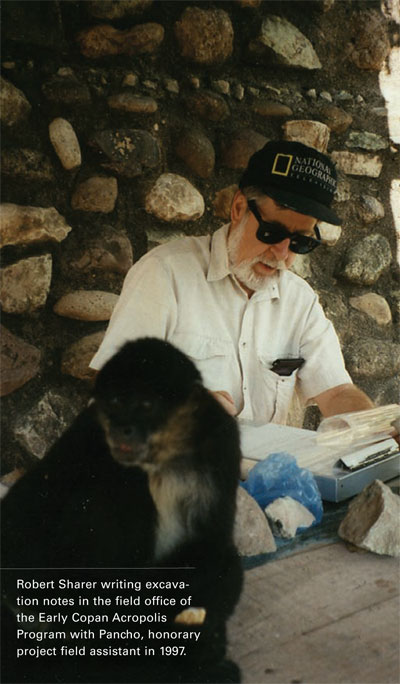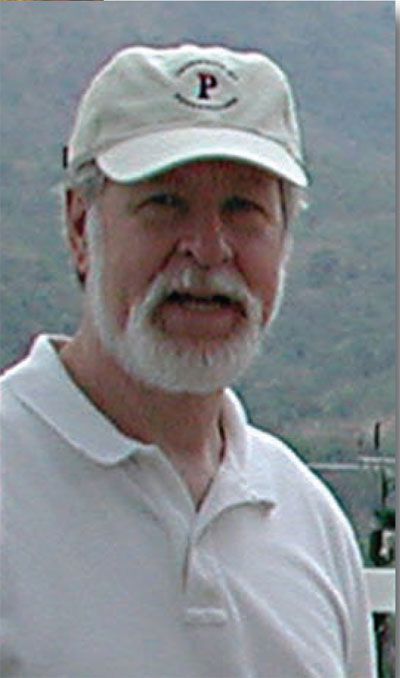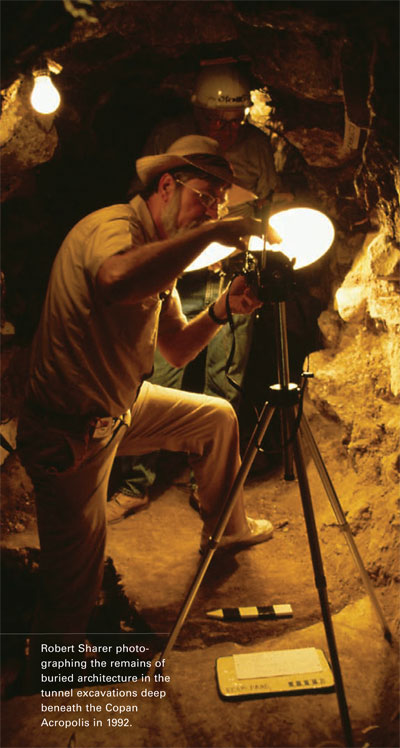 Robert J. Sharer, Curator-in-Charge of the Museum’s American Section, became interested in archaeology as an undergraduate when he took a summer job at the Michigan State University Museum. The fascinating stories of Arctic field archaeology told by his boss, the noted Arctic scholar Moreau Maxwell, prompted Sharer to broaden his history major by taking additional anthropology classes.
Robert J. Sharer, Curator-in-Charge of the Museum’s American Section, became interested in archaeology as an undergraduate when he took a summer job at the Michigan State University Museum. The fascinating stories of Arctic field archaeology told by his boss, the noted Arctic scholar Moreau Maxwell, prompted Sharer to broaden his history major by taking additional anthropology classes.
During his senior year (1960–61) at Michigan State, Sharer was unexpectedly nominated for a Woodrow Wilson graduate fellowship, which he was awarded. This required him to choose a graduate school and field of study. A serendipitous dinner meeting with the University of Pennsylvania anthropologist Loren Eiseley, who was invited to speak at Michigan State University by Sharer’s father, the head of the Evening College there, persuaded Sharer to choose the University of Pennsylvania for graduate school, sight-unseen.
Sharer began his graduate career in anthropology at Penn in 1961, studying archaeology under Bernard Wailes. A summer excavation project in Cornwall with Wailes convinced Sharer that his interests were in archaeology. After two years of graduate work, Sharer took a two-year break to fulfill his military obligation, returning to graduate school at Penn in 1965. Sharer’s dedication to Maya studies can be traced to the influence of Ruben Reina. After taking a course in Maya ethnography, Sharer went to Guatemala for summer research in a highland Maya community, and found the people, their traditions, and the region fascinating. With guidance from William Coe, Sharer’s Ph.D. thesis research focused on collections from Coe’s excavations at El Trapiche, an early precinct of the site of Chalchuapa in El Salvador. Sharer finished his graduate work in 1967 and was awarded his doctorate in 1968.

His first academic position was at Pitzer College (part of the Claremont Colleges) in California, where he taught from 1967 to 1972. While at Pitzer, Sharer was able to return to Chalchuapa for field research between 1968 and 1970. The project was partially funded by a large research grant for graduate student training, which Penn Museum Director Froelich Rainey had secured for Penn Museum projects, including Chalchuapa.
Upon Linton Satterthwaite’s retirement in 1972, Sharer was appointed Assistant Professor in Penn’s Department of Anthropology and Assistant Curator in the American Section at the Penn Museum. Sharer was promoted to Associate Professor and Associate Curator in 1975; became Professor and Curator in 1984; was appointed Curator-in-Charge of the American Section in 1987; and was made Shoemaker Professor in Anthropology in 1995. His research career has focused on two major Penn Museum excavation projects at Maya sites—Quirigua in Guatemala (1974–79) and Copan in Honduras (1988–2003)—as well as a number of smaller projects in Guatemala and Honduras.
 While Field Director of the Quirigua Project in 1975, Sharer was invited by Gordon Willey of Harvard University to help develop a master plan for future research at Copan. Sharer’s contribution to the master plan included a proposal to investigate the Acropolis area at Copan using a series of tunnel excavations, which could be dug horizontally into the Acropolis from the river-cut side. At the time, Sharer had no idea that he would eventually be asked to undertake this work. But, in 1988, William Fash, now director of the Peabody Museum at Harvard University, offered this option to Sharer, who realized that the tunneling strategy afforded a truly unique opportunity to explore the history of the Acropolis from its foundation to its last constructed buildings. Sharer’s expectations were more than fulfilled, as his team found what appears to be the tomb of Copan’s Dynastic Founder, a discovery without equal at any Maya site, as well as revealing the entire sequence of building and rebuilding at the Acropolis by later rulers of Copan (see Expedition issues 33-2, 41-2, and 41-3). Although directors of large complex archaeological projects usually spend their time in administration and logistics, Sharer found time to excavate the “Founder’s Tomb” and a large dedication cache at Copan.
While Field Director of the Quirigua Project in 1975, Sharer was invited by Gordon Willey of Harvard University to help develop a master plan for future research at Copan. Sharer’s contribution to the master plan included a proposal to investigate the Acropolis area at Copan using a series of tunnel excavations, which could be dug horizontally into the Acropolis from the river-cut side. At the time, Sharer had no idea that he would eventually be asked to undertake this work. But, in 1988, William Fash, now director of the Peabody Museum at Harvard University, offered this option to Sharer, who realized that the tunneling strategy afforded a truly unique opportunity to explore the history of the Acropolis from its foundation to its last constructed buildings. Sharer’s expectations were more than fulfilled, as his team found what appears to be the tomb of Copan’s Dynastic Founder, a discovery without equal at any Maya site, as well as revealing the entire sequence of building and rebuilding at the Acropolis by later rulers of Copan (see Expedition issues 33-2, 41-2, and 41-3). Although directors of large complex archaeological projects usually spend their time in administration and logistics, Sharer found time to excavate the “Founder’s Tomb” and a large dedication cache at Copan.
After a long and successful career, Sharer will retire in the summer of 2009. This, however, does not mean that he hangs up his hat for good. Since 2004, he has been hard at work with his wife and colleague, Loa Traxler, to ensure that all Copan databases, artifacts, records, photographs, maps, and so forth are completely analyzed, curated, and conserved for future generations. He currently is working on the first of several monographs on the Early Copan Acropolis Program, and anticipates using his “free time” after retirement to concentrate on this research.
